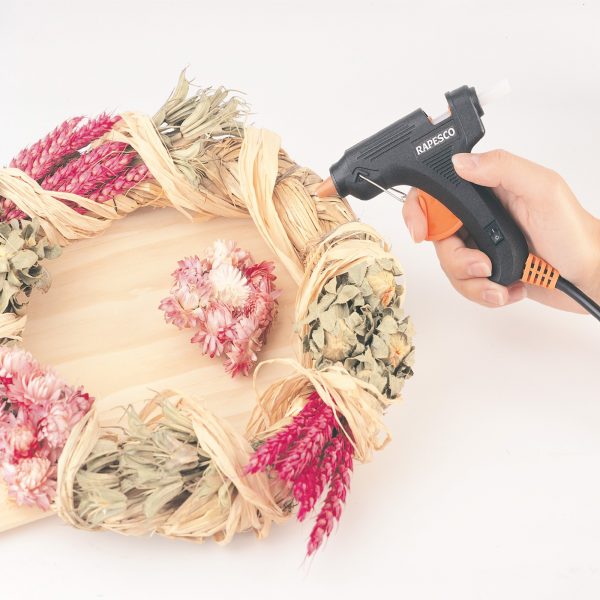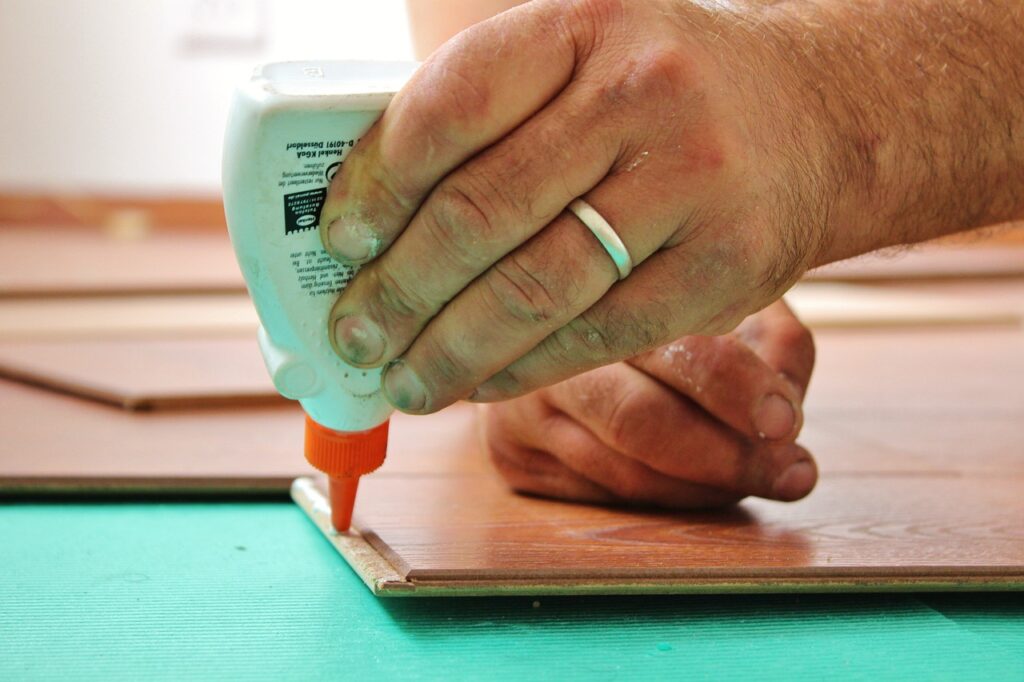Don't miss your chance to save money on staple guns, tools, compressors and many more with our current Special Offers
The Ultimate Guide to Upholstery Glue
March 18, 2025
When it comes to upholstery projects, the right adhesive can make all the difference. Upholstery glue is a must-have for both DIY enthusiasts and professional upholsterers, offering a strong and reliable bond for fabrics, foam, wood, and other materials. Whether you are repairing furniture, securing trims, or working on a complete reupholstery project, choosing the right glue is crucial for durability and a professional finish.
At JA Milton Upholstery, we stock a variety of upholstery adhesives designed to meet different project needs, including Glue guns, Hot melt glue sticks, Low melt glue sticks, and Wood glue. In this comprehensive guide, we will explore the different types of upholstery glues, their applications, and how to use them effectively.

Why Use Upholstery Glue?
Upholstery glue is an essential tool in furniture restoration and upholstery projects. Unlike sewing, stapling, or nailing, glue offers a seamless finish while ensuring a strong, lasting bond between different materials.
Key Benefits of Upholstery Glue:
- Strong and Durable Bond – Upholstery glue provides excellent adhesion for fabric, foam, and wood, ensuring materials stay securely in place.
- Time-Saving Solution – Compared to sewing or tacking, glue allows for quick application and faster project completion.
- Versatile Applications – Upholstery adhesives work well on various materials, including wood, fabric, foam, leather, and vinyl.
- Professional Finish – Glue ensures a seamless, polished look without visible fasteners, giving furniture a high-quality appearance.
- Flexible and Long-Lasting – Many upholstery glues remain flexible after drying, preventing cracks and damage over time.
Types of Upholstery Glue and Their Uses
Different upholstery projects require different adhesives. There are several types of Upholstery Glues available including glue guns, hot melt glue sticks, low melt glue sticks, wood glue, aerosol spray adhesive, contact adhesive, fabric glue, and hot glue, each suited for specific applications.
1. Spray Adhesive (Aerosol Glue)
Spray adhesive is a highly versatile upholstery glue designed to bond foam, fabric, and lightweight materials. It provides an even, controlled application and dries quickly, making it perfect for large-scale upholstery projects.
Best Uses for Spray Adhesive:
- Attaching foam to wood or fabric backing – Ensures a strong bond without excessive glue buildup.
- Bonding lightweight fabrics – Ideal for applications requiring even glue distribution without stiffening the fabric.
- Securing soft padding layers – Prevents movement or shifting of foam layers inside cushions.
Pros:
- Provides an even, mess-free application.
- Quick drying and easy to use.
- Works well for large surfaces and foam bonding.
Cons:
- Not suitable for high-stress or structural applications.
- Requires proper ventilation due to adhesive fumes.
2. Contact Adhesive
Contact adhesive creates a strong, permanent bond that works well for heavy-duty upholstery work. It is commonly used in professional upholstery applications, particularly for bonding dense fabrics, leather, and vinyl.
Best Uses for Contact Adhesive:
- Bonding leather and vinyl upholstery – Provides a firm, lasting hold on non-porous surfaces.
- Attaching fabric to rigid surfaces – Helps secure upholstery fabric to wood or metal furniture frames.
- Heavy-duty upholstery repairs – Offers a strong, durable bond for materials under stress.
Pros:
- Creates a powerful, long-lasting bond.
- Suitable for heavy-duty upholstery work.
- Works on leather, vinyl, and dense fabrics.
Cons:
- Requires application on both surfaces before bonding.
- Strong fumes require good ventilation.
3. Hot Glue (Glue Guns and Refill Sticks)
Hot glue is a quick-drying adhesive commonly used for securing trims, embellishments, and minor upholstery repairs. It is applied using a hot glue gun, which melts glue sticks and allows for precise placement.
Best Uses for Hot Glue:
- Attaching upholstery trims and decorative braids – Provides a strong, clean method for securing details.
- Securing fabric edges for temporary holds – Helps hold fabric in place before final sewing or stapling.
- Quick upholstery repairs – Ideal for fixing small tears or loose trims.
Pros:
- Dries quickly, allowing for fast project completion.
- Provides a strong hold on lightweight materials.
- Easy to use with minimal mess.
Cons:
- Not recommended for high-stress areas or heavyweight materials.
- Can be difficult to remove or reposition once applied.
4. Fabric Glue
Fabric glue is a washable, flexible adhesive specifically designed for bonding textiles. It is an excellent alternative to sewing for minor upholstery repairs.
Best Uses for Fabric Glue:
- Hemming and minor fabric repairs – Provides a strong hold without sewing.
- Securing lightweight fabric layers – Works well for delicate textiles.
- Upholstery applications requiring flexibility – Keeps fabric soft and pliable after drying.
Pros:
- Flexible and washable, making it ideal for textiles.
- Easy to apply, requiring no special tools.
- Suitable for lightweight upholstery projects.
Cons:
- Not as strong as contact adhesive for heavy-duty applications.
- Takes longer to dry compared to hot glue.
5. Wood Glue (Furniture Glue)
Wood glue is essential for reinforcing furniture frames and structural upholstery components. It creates a long-lasting, durable bond that can withstand pressure and movement.
Best Uses for Wood Glue:
- Repairing wooden furniture frames – Strengthens joints, legs, and internal support structures.
- Bonding wooden panels and reinforcements – Helps secure plywood, MDF, and hardwood components.
- Attaching webbing and support structures – Provides extra reinforcement for webbing strips and seat supports.
Pros:
- Creates an extremely strong bond that lasts for years.
- Resistant to heat, pressure, and environmental conditions.
- Water-based options available for easy cleanup.
Cons:
- Requires longer drying time than other upholstery glues.
- Not flexible after drying, making it unsuitable for fabric-to-fabric applications.

How to Use Upholstery Glue Effectively
To ensure the best results, proper application techniques are essential.
Here are some tips to help you get the most out of your upholstery glue.
1. Prepare the Surface
Before applying glue, ensure that all surfaces are clean and dry. Any dust, grease, or debris can prevent the adhesive from bonding properly.
2. Apply the Glue Evenly
For hot melt and low melt glue, use a steady hand to apply an even layer of adhesive along the intended surface. Avoid applying too much glue, as excess adhesive can seep through fabric or create lumps.
For wood glue, apply a thin, even layer and clamp the pieces together to ensure a tight bond.
3. Allow Proper Drying Time
Different glues have different drying times. Hot glue dries within seconds, while wood glue may require several hours to fully cure. Follow the manufacturer’s recommendations for drying time to ensure a strong bond.
4. Use Clamps or Pressure for Extra Hold
For wood glue applications, using clamps ensures that joints stay secure while the glue dries. For fabric applications, applying light pressure helps create a seamless bond.
5. Test on a Small Area First
Before committing to a large upholstery project, test the glue on a small, hidden section of fabric or foam. This helps ensure compatibility and prevents damage to delicate materials.
Choosing the Best Upholstery Glue for Your Project
The right upholstery glue depends on the type of materials you are working with and the strength of the bond required.
- For trims, decorative elements, and lightweight fabric applications, a hot melt glue gun or low melt glue gun is the best choice.
- For furniture frame repairs and structural reinforcement, wood glue provides a secure and long-lasting bond.
- For foam and fabric applications that require flexibility, low melt glue sticks are the safest option.
Find High-Quality Upholstery Glue at JA Milton
At JA Milton Upholstery, we provide a wide range of high-quality upholstery glues and adhesives to help you achieve professional results. Whether you are securing fabric, reinforcing furniture frames, or making quick repairs, we have the right glue for your needs.
Explore our full range of upholstery glues, glue guns, and adhesives at JA Milton Upholstery and ensure your upholstery projects have a strong and lasting bond.
SHARE
Newsletter Signup
Join our monthly JAM Club newsletter for special offers and handy tips for your next upholstery project.



